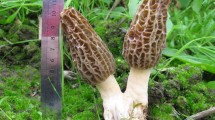Abstract
Previously, we have reported that geniposide isolated from an extract of Gardenia fructus has neuritogenic activity in PC12h cells, a subclone of rat pheochromocytoma cells. Furthermore, we have indicated that several geniposide-related iridoid compounds also had similar potent neuritogenic activity. In this study, we have examined the effects of various secoiridoid compounds [K-1, sweroside; K-2, swertiamarin; K-3, gentiopicroside; K-4, 6′-O-β-d-glucopyranosylsweroside; K-5, 6′-O-β-d-glucopyranosylgentiopicroside; K-6, 6′-O-β-d-glucopyranosylswertiamarin; K-7, 5′-O-β-d-glucopyranosylamarogentin; K-8, 5′-O-β-d-glucopyranosylamaroswertin; H-1, n-butyl vogeloside; H-2, n-butyl epivogeloside; H-3, (7S)-secologanin butyl methyl acetal; H-4, (7R)-secologanin butyl methyl acetal; H-5, secologanin dimethyl acetal] isolated from various medicinal herbs. The secoiridoids H-1, H-2, H-3, H-4, and H-5 induced significant neurite outgrowth. Among these H-series compounds, H-2 was the most potent neuritogenic compound. Among the K-series compounds, K-1, K-2, K-3, and K-8 showed the most potent activity. These results suggest that secoiridoids have neuritogenic activity in PC12h cells and that these secoiridoid compounds are promising starting compounds for the development of neurotrophic factor-like and iridoid compounds.



Similar content being viewed by others
References
Dinda B, Debnath S, Harigawa Y (2007) Naturally occurring seoiridoids and bioactivity of naturally occurring iridoids and secoiridoids. Chem Pharm Bull 55:689–728
Yamazaki M, Chiba K, Mohri T (1996) Neuritogenic effect of natural iridoid compounds on PC12h cells and its possible relation to signaling protein kinases. Biol Pharm Bull 19:791–795
Chiba K, Yamazaki M, Kikuchi M, Machida K, Kikuchi M (2006) Neuritogeneis of herbal geniposide-related compounds in PC12h cells. J Health Sci 52:743–747
Yamazaki M, Chiba K, Mohri T, Hatanada H (2001) Activation of the mitogen-activated protein kinase cascade through nitric oxide synthese as a mechanism of neuritogenic effect of genipin in PC12h cells. J Neurochem 79:45–54
Hatanaka H (1981) Nerve growth factor-mediated stimulation of tyrosine hydroxylase activity in a clonal rat pheochromocytoma cell line. Brain Res 222:225–233
Yamazaki M, Chiba K (2005) Neurotrophic effects of genipin on Neuro2a cells. J Health Sci 51:687–692
Yamazaki M, Chiba K (2008) Neuro2a cell death induced 6-hydroxydopamine is attenuated by genipin. J Health Sci 54:638–644
Yamazaki M, Chiba K (2009) Genipin suppresses A23187-induced cytotoxicity in Neuro2a cell. Biol Pharm Bull 32:1043–1046
Kikuchi M, Kikuchi M (2004) Studies on the constituents of Swertia japonica Makino I. On the structures of new secoiridoid diglycosides. Chem Pharm Bull 52:1210–1214
Kanno M, Kakuda R, Kikuchi M (2007) Studies on the constituents of Hydrangea species. II. On the chemical constituents of the leaves of Hydrangea macrophylla subsp. serrata (Thunb.) Makino. J Tohoku Pharm Univ 54:57–61
Ohkubo T, Yamazaki M, Yoshida A, Chiba K, Mohri T (2005) Detection of genipin/geniposide-target molecules by a geniposide overlay method using anti-geniposide antibody. J Health Sci 50:193–196
Acknowledgments
This work was supported by the “Academic Frontier” Project for Private Universities from the Ministry of Education, Culture, Sports, Science and Technology of Japan (2005–2009).
Author information
Authors and Affiliations
Corresponding author
Rights and permissions
About this article
Cite this article
Chiba, K., Yamazaki, M., Kikuchi, M. et al. New physiological function of secoiridoids: neuritogenic activity in PC12h cells. J Nat Med 65, 186–190 (2011). https://doi.org/10.1007/s11418-010-0449-y
Received:
Accepted:
Published:
Issue Date:
DOI: https://doi.org/10.1007/s11418-010-0449-y




